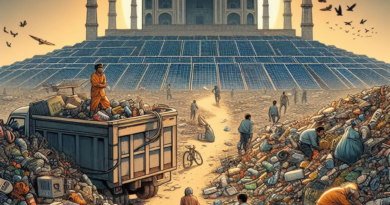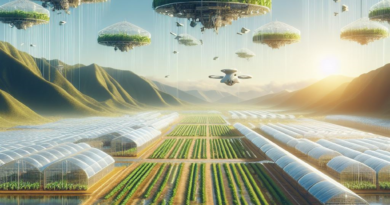In the Long Run Waste water May Be Useful – Ias Banenge
Context
- The availability and quality of fresh water are major global issues that pose a threat to the planet’s ability to support life. The Council on Energy, Environment and Water (CEEW) recently published an independent study that highlighted some of India’s serious water issues.
- The Council on Energy, Environment and Water (CEEW) has provided some useful solutions in its study, “Reuse of Treated Wastewater in India: Market Potential and Recommendations for Strengthening Governance”.
- According to the UN Waste Water Assessment Programme report, high-income nations treat about 70% of the produced wastewater. In upper-middle-income countries, the ratio falls to 38%, in lower-middle-income countries to 28%, and in low-income countries to 8%. Around 20% of the world’s wastewater is treated as a result of this.
Relevance:
GS Paper-3: different types of irrigation and irrigation systems storage; Science and Technology- developments and their applications and effects in everyday life.
Mains Question
According to data from the Central Pollution Control Board, India only treats 28% of the total sewage that is produced daily from its urban areas. Provide a suggestion for the waste water reuse strategy’s future. (250 Words).
Highlights of the CEEW Report:
- The report noted that India only treats 28% of the total sewage it generates daily from its urban areas, based on data from the Central Pollution Control Board from 2021.
- Only 20,236 mld of the 72,368 mld of sewage produced in these areas each day is actually treated. Only 30% of the estimated 38,254 mld of sewage produced by Tier-1 and Tier-2 cities, which account for 72% of the urban population, is actually treated.According to the report, India will produce more than 35,000 million cubic metres of wastewater by 2050, and only 10 States currently have policies for the reuse of treated wastewater.
- Using estimates from the Central Water Commission, the CEEW researchers determined that 11 of the 15 major river basins are likely to experience water stress by 2025.
- They considered it “essential to explore alternative sources of water to address the demand-supply gap.”
Potential for Reusing Wastewater:
- The scientists believed that there was a “tremendous potential” for doing so.
- “Using treated wastewater for irrigation in 2021 would have saved 1.3 million tonnes of greenhouse gas emissions and 5 crore in fertiliser use, and could have generated 28 million metric tonnes of fruit and vegetable produce and 96600 crore in revenue in 2021 alone.”
- “If a mechanism to sell treated wastewater to specific sectors is developed, the market value of treated wastewater in India will be Rs 83 crore in 2025 and Rs 190 crore in 2050.”
Reusing wastewater has several advantages, including:
Lowering water bills, using less water, watering the garden during dry spells, reducing pollution in waterways, saving money on new water supply and wastewater treatment infrastructure, and reducing demand on sewage transport, treatment, and disposal infrastructure, allowing it to function more effectively and last longer.
READ MORE – What Is Artificial Intelligence & From Where Does It Get Started? Ias Banenge
Way Forward
- The best course of action is to change the paradigm surrounding policymaking and acknowledge wastewater as a crucial component of water resources that must be taken into account in all plans for water management.
- Establish water quality standards: Clear standards for water quality are required for both safe discharge and reuse.
- Create institutional mechanisms: Urban local bodies should have the authority to create and adopt long-term plans for the reuse of wastewater at the city level. Roles and responsibilities should be clearly defined, and end-user groups should be actively involved.
- Invest in technological advancements: Specific funding should be set aside for wastewater treatment technology research and development, which can maximise resource efficiency. State governments must announce a detailed plan for this area of research and development.
- Optimal use of financial resources: wastewater treatment plant operators and end users should receive targeted performance-based incentives, and an efficient pricing mechanism should be established, taking into account various end-user categories and their ability to pay.
- Including the general public as a stakeholder: In order to foster public trust and generate responses for the successful implementation of wastewater reuse projects, responsible authorities should develop effective public outreach plans.





Pingback: What is Saurashtra Tamil Sangamam? Ias Banenge - Ias Banenge